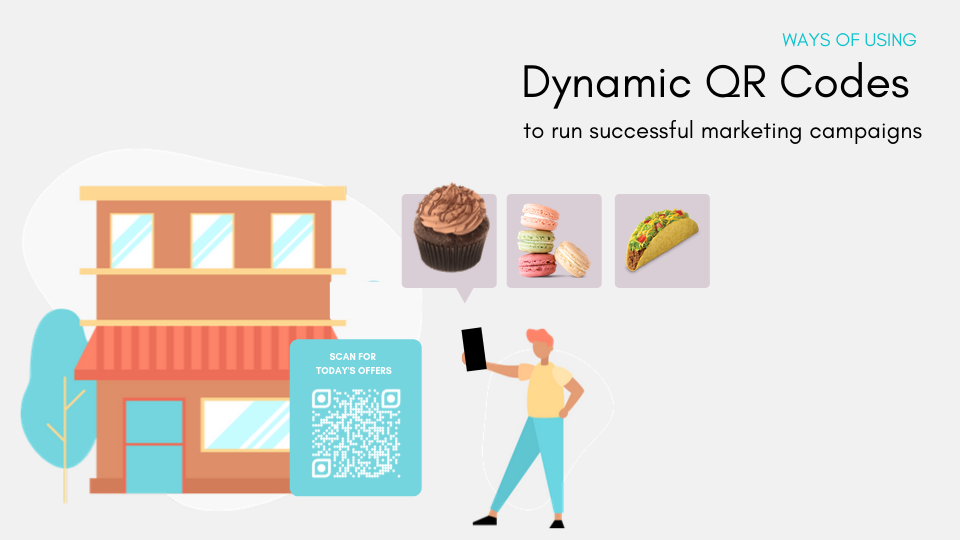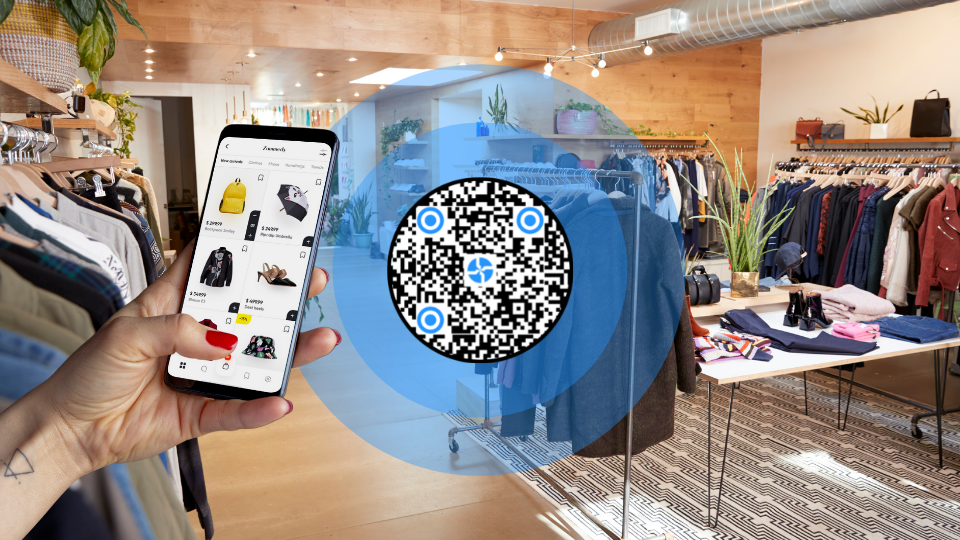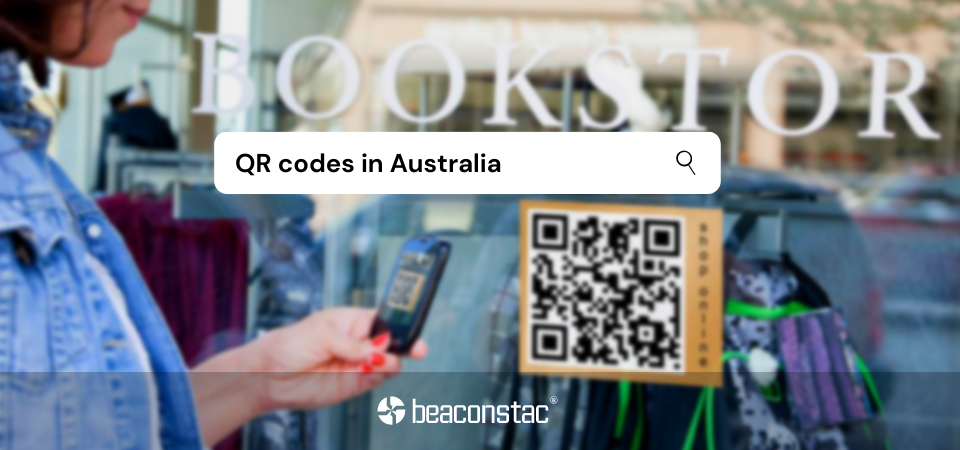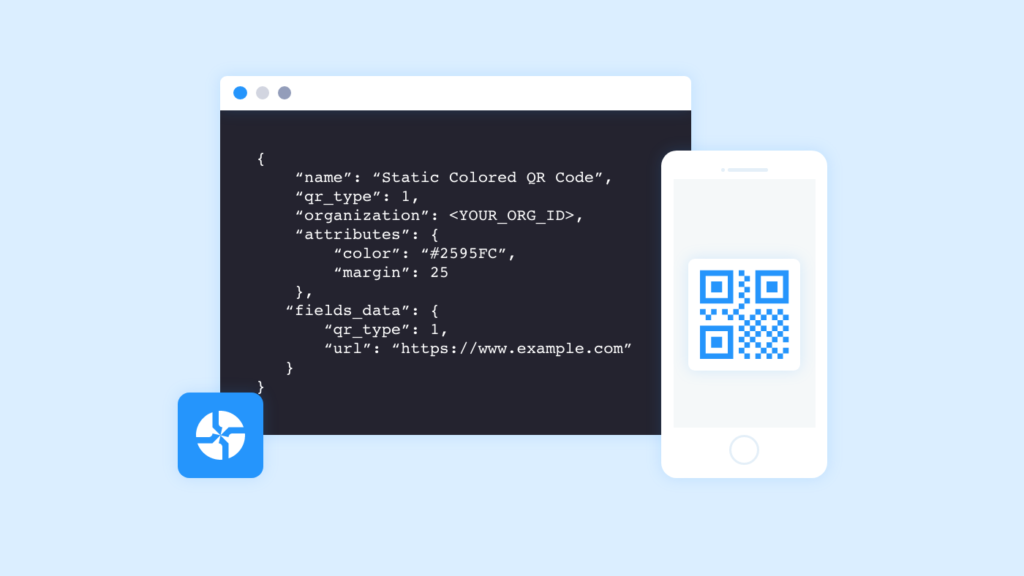QR Codes with their simple, uncomplicated functionality have taken over the world.
These 2D matrix barcodes called QR Codes are the route to strategically bridge the gap between offline and online world. QR Codes, although a native to Japan and China, are now gaining immense popularity in the USA, Europe, and other southeast Asian countries. Businesses, regardless of their size are now implementing QR Codes as a means of marketing to attract customers and gain more popularity.

Table of Contents
- How to implement dynamic QR Codes for a successful marketing campaign
- Automate your QR Code campaigns
- Change campaigns
- Gather analytics and fine-tune campaigns
- Implement experiential retail
- Retain customers and amplify customer engagement
- Brands that got it right using dynamic QR Codes
- QR Code marketing fails
- Why do brands fail?
- Create your own dynamic QR Code marketing campaign
Ergo, QR Code marketing campaigns are the new game-changers. Thanks to the ever-growing population investing in smartphones and the accessibility of scanning QR Codes easily, the usage of QR Codes in marketing has picked up steam.
QR Codes are a gateway that can turn anything into an interaction point that enhances a customer’s digital experience. If the marketing campaign’s agenda is right, the brand can increase its online-to-offline sales seamlessly. In an economy that is #MeFirst, deploying QR Codes for marketing campaigns to make the customer feel like a king is an end to all fruitless sales woes of companies. Giant enterprises like IKEA, Coca-Cola, WeChat, Instagram amongst others have successfully exploited the staggering technology behind dynamic QR Codes for their marketing campaigns, and have, in turn, triumphed.
How to implement dynamic QR Codes for a successful marketing campaign
Firstly, why use dynamic QR Codes for running a marketing campaign? Why not static QR Codes? The answer to this question is quite simple – dynamic QR Codes offer versatility, erase errors, freedom to edit, etc that static QR Codes do not offer. Moreover, they can be created and managed with ease with the help of a trusted dynamic QR Code generator.
Still not convinced? Here’s the difference between static and dynamic QR Codes.
Getting the recipe right for running a successful marketing campaign using dynamic QR Codes isn’t rocket science. However, there are a few brands that couldn’t quite get it right. In short, there are good and bad QR Code marketing campaigns. We’ll come back to that.
First, here is the blueprint to leveraging dynamic QR Codes:
#1 Automate your QR Code campaigns
Dynamic QR Codes offer flexibility and versatility to change the advertisements based on the company’s preference. Let’s say you run a cafe. You are looking to increase customer engagement and you think the best possible approach to this is by offering deals based on peak hours. You place QR Codes all over the cafe and upon scanning them, the customers get offers and discounts to avail them. Imagine having to keep editing the QR Code campaign every three hours. Isn’t that cumbersome and infuriating?
With dynamic QR Codes, you can program your campaign in such a way that the offers and discounts change timely in accordance with the peak and non-peak hours. Dynamic QR Codes for marketing campaigns can be used for multiple purposes – OOH ads and billboards, brochures, print ads, vCards, receipts, etc. It can be set up hourly, weekly or even monthly based on the brand’s preference.
Create your first dynamic QR Code
#2 Change campaigns. Not the code.
Chris Parry, a UK-based jewellery designer created hand-engraved jewellery pieces like cufflinks, rings, and lockets that had QR Codes on them. The cufflinks, made of sterling silver, allowed users to encode a personalized message on the QR Code and gift them to their loved ones. The QR Code used was a dynamic QR Code, which means the message could be copy-edited as many times as the user wanted to change their message accordingly. Something that is impossible if a static QR Code was used in place of a dynamic QR Code.
A dynamic QR enables you to change the QR Code destination or edit the content of your campaign even after printing it. There is nothing more desolating than developing a brilliant QR Code with an ad campaign only to have forgotten to add and/or remove minor details to make it more enticing. An engaging ad campaign must be favorable to the users. Deploying a dynamic QR Code is the solution to end all uncertainty and rectify any blunder of the marketing campaign, if present, in order to create a successful marketing campaign.
#3 Gather analytics and fine-tune campaigns in real-time
For any successful marketing campaign, analytics are absolutely vital to measure its engagement and efficacy. The deployed dynamic QR Codes can be tracked to show the location, time and date of scan as well as the overall CTR of the campaign. Additional information about the audience can be gleaned by tracking QR Codes in google analytics.
How to integrate Google Analytics with your campaign
A dynamic QR Code permits the brand to also edit their landing pages based on analytics in real-time. If an enterprise has multiple marketing campaigns, managing them one by one becomes tedious. In such cases, with the use of dynamic QR Codes, real-time split A/B testing can be performed to track their campaigns’ progress.
#4 Implement experiential retail
Typical brick-and-mortar shops are so passe. Millennials these days would rather invest in a satisfying experience rather than something materialistic that provides no satisfaction such as wellness and gyms, experimental game or arenas.
Dynamic QR Codes, when integrated with marketing campaigns that provide instant gratification, can yield a favorable outcome. Since dynamic QR Codes offer marketers the liberty to edit their campaigns, they can change the advertisements targeting a specific type of crowd to captivate their attention further.
Here are some methods to nail experiential retail using dynamic QR Codes –
1. Audio QR Codes: Spotify Codes but better
Spotify launched its own type of QR Codes called Spotify Codes. A Spotify Code, a new feature on Spotify, works by generating a QR Code for a track, playlist, or even an album that can be shared. When the code is scanned, the user is taken directly to the page of the music on Spotify. A Spotify Code can be created in a jiffy. Simply enter the URL of the particular song on Spotify, go to the Spotify Codes website, create a unique code, and share the code.
Restaurants, retailers, and bars nowadays have their own playlists of various genres and tempos made out of Spotify Codes. These Spotify Codes are placed all over the premises and when the customer scans them, it takes them directly to the app letting them be the master of their music.
But, what if a business or brand wanted to offer users more control over the music they listen to in a store? Changing Spotify Codes every other day is a hassle.
A dynamic QR Code can be linked to a landing page that has fresh playlists every day that customers can choose depending on their mood. This does not even require users to download the Spotify app or any app for that matter since the QR Code can be scanned natively through the smartphone’s camera.
Audio QR Codes are all the rage right now in the world of music. Gone are the days when one would share the link to their favorite song on messaging apps, and that would further be linked to the browser only to deep-link the song to a specific music app. Audio QR Codes have simplified the process of sharing favorite songs and playlists simply by scanning the QR Codes using a smartphone, which in turn redirects the users to the music without much stalling.
2. Deliver augmented reality content

Retailers and parks these days are using augmented reality (AR) into their QR Codes to deliver an enhanced experiential service. One of the ways retailers can implement is by uploading a marker inside a dynamic QR Code that, when scanned, will both redirect the customer to the brand’s AR app and that also holds a marker for the AR.js.
The process is far simpler than one can imagine. The user has to simply scan the QR Code, open the URL implanted in the QR Code, and continue to scan the same QR Code to notice a 3D animated figure appear on top of it. The other way to deliver AR content is by having users scan a QR Code that uses the camera’s AR features and allows them to visualize any object in their space and even take a picture of it.
This new technology has elevated the whole experience of try-and-buy for retailers. The amount of disclarity and skepticism that a user can avoid by trying AR is immense. No wonder, this is the year of QR Codes.
Let’s take a look at some of the brands that excelled in their marketing campaigns using AR-enabled dynamic QR Codes.
PUMA

German sportswear giant Puma inaugurated its first AR shoe, the LQD Cell Origin Air in April. The body of the shoe is emblazoned with 2D dynamic QR Codes, which when scanned, unlock a plethora of AR experiences for the user including games, filters, and fun effects. To access these features, the wearers must download the Puma LQD Cell app that is available on both iOS and Android.
The app also lets users play an augmented reality running game. This smart marketing initiative is the brand’s answer to blur the lines between reality and the virtual world.
Puma’s flagship store in NYC also features QR Codes right outside the store that using AR allows users to take a picture with their mascot. This, in turn, adds user-generated content turning every potential customer into a micro-influencer.
GOOGLE GLASS

Google has amalgamated the technologies of QR Codes and AR to create a spectacular reality-like experience for customers. Google Glass, which is essentially smart glasses has an optical head-mounted display embedded in the shape of a pair of eyeglasses. This pair of smart glasses have the ability to scan a QR Code and redirect the wearer to the digital website, letting the user enjoy the scanned products come to life.
#5 Retain customers and amplify customer engagement
Retaining old and new customers by sending out coupons, offers and deals through direct mailers will never run out of fashion.
But what is definitely out of fashion is the physical print version of the same coupons and offers. Brands these days are switching to digital coupons to amplify customer engagement as well as become more eco-friendly.
Dynamic QR Codes can be the perfect suitor for such campaigns. A single dynamic QR Code can list out all the available offers which customers can choose to redeem based on their preferences. Since the same dynamic code can be edited, all a consumer needs to do is hold on to that QR Code instead of looking for, cutting out and collecting numerous coupons.

Grocery chain brand Kroger sends QR Codes that contain coupons and recipes to customers in their direct mail. They have also rolled out Kroger Pay, a mobile payment solution that assures to combine the user’s payment and loyalty card information to develop a rather swift checkout experience. The customer is supposed to download Kroger Pay, enter a custom PIN or biometrics, the app then provides customers with a QR Code that can be quickly scanned at the bay to complete their payment and also feed in their loyal card information. This gateway was created to allow customers to experience a frictionless purchase for both store associates and customers.
Let’s see how some brands got their QR Code marketing campaigns right
Guinness

Guinness, one of the most popular Irish stout brands in the world, launched its most successful marketing campaigns in 2012 which also won the John Caples International Marketing Award. These customized Guinness mugs unveiled a QR Code when it was filled with Guinness beer. This QR Code was unscannable when any other beer was filled. Upon scanning, the user could download exclusive Guinness promotions and even update their Facebook and Twitter status, and invite their friends to join them.
How they could have done it better
Had Guinness incorporated a dynamic QR Code rather than a static QR Code, the brand could have changed its promotional offers regularly without needing to customize the mugs all over again.
Mercedes

Mercedes kicked out a QR-trophy based mobile app to launch its new A-Class in 2012. The German-based luxurious car manufacturer created an app and website to elevate the media buzz and curiosity of their newly launched car. The company placed QR Codes all across the exterior of their new car model and drove it around the city. Users could chase down the cars and scan the codes to collect points and badges. The first person to collect all the QR-trophy badges could win a trip to their A-Class premiere in Geneva. The landing page also had an animated film explaining the QR-trophy concept.
This smart marketing campaign was on everyone’s minds and was a massive rage all-over print and online media.
Verizon

Back in 2010, Verizon collaborated with ScanLife to promote its diverse set of apps available on its DROID devices. QR Codes were implanted on their print ads including in-store displays, direct mail, and online print ads, redirecting the users to a particular app that displayed some of their top apps, either on the Play Store or a mobile site. Users with a different operating system were directed to their mobile site that explained the advantages of DROID and the array of apps available on them.
The campaign received more than 150,000 scans in just over three months.
How they could have done it better
A dynamic QR Code here would have helped them revamp some of their content on the QR Code-enabled campaigns to let the users choose any app out of the many apps for a better try-out experience.
Singapore’s VivoCity Campaign

Singapore’s largest shopping mall VivoCity used four life-sized QR Codes to captivate their customers’ attention and enhance their Facebook page likes in 2013. During the Great Singapore Sale, these life-sized mascots named VivoCity’s Codeys wandered all around the mall and encouraged the visitors to scan them. Users who scanned these dynamic QR Codes were taken to a contest promo page to win prizes. They also had to ‘Like’ their Facebook page.
VivoCity’s campaign saw 8,618 scans and almost doubled their Facebook Like which was a total number of 4,400.
Remember, when we talked about bad QR Code marketing campaigns?
QR Code Marketing Fails
Buick

Automotive company Buick launched a print ad that had QR Codes on them. When this QR Code was scanned, the user would be redirected to a short video explaining the functionality of their car’s eAssist technology. This campaign was almost headed the right way, but here is the loophole – the user had no following URL or link once the video finished. The company did not provide the user any landing page, the product page for their advertised car or even the page that explained its eAssist technology. This is an old-fashioned warm-up advertisement failure that wasted resources.
The fix
In this case, if the brand had implemented a dynamic QR Code for their campaigns, they could have rectified all the aforementioned blunders that the campaign had, and in turn, saved their resources spent on the campaign.
Investec Bank

In 2011, Investec Bank launched QR Codes. Zebra, which is Investec Bank’s forefront identity was plastered all across under their “Visibly Smart” campaign, where the QR Code was embedded onto the Zebra’s eye. But, this was placed right next to Intel’s advertisement with an unscannable code. The campaign, alas, was not so “visibly smart.”
Sure, Investec Bank jumped the wagon and wasted thousands of dollars on a print-ad campaign that couldn’t even be noticed correctly. But, if they had to redistribute the same campaigns, they could have used dynamic QR Codes and run a successful campaign. Since dynamic QR Codes contain a placeholder URL, they do not look as ‘busy’ and can be scanned much faster than static QR Codes.
Goldman Sachs
Investment firm Goldman Sachs passed around a series of paper advertisements that contained a QR Code. When this QR Code was scanned, the consumer was redirected to a four-minute self-promotional boring corporate commercial. After this four-minute-long ordeal finished, there was nowhere for the user to go next. No dedicated toll-free number to call, no mention of their official email address to follow up, and no contact request form to fill up – nothing.
If the investment firm had only used dynamic QR Codes for their campaigns, they could have fixed these issues to finally provide an ad campaign that delivered value.
Why do brands fail?
Where are brands actually going wrong? Why do these QR Code campaigns actually fail?
Some of the most relevant reasons why QR Code marketing campaigns fail are –
- The placement of the QR Code is not appropriate. QR Codes, when placed appropriately, is supremely effective in contrast with QR Codes that are inappropriately placed.
- Using static QR Codes in place of dynamic QR Codes is another reason why marketing campaigns fail. A static QR Code is permanent; dynamic QR Code isn’t. Thus, it is vital to customize the QR Code accordingly to make it visually more appealing, noticeable, and relatable to get the strategy right.
- A broken QR Code is as bad as a broken link to a website. Perform cross device testing for the developed QR code multiple times to ensure it works.. Re-test the QR Codes regularly to avoid bounce backs.
- Several brands do not have call-to-action on their QR Code campaigns. Customers must always have a reason to come back to the brand. Retargeting the customers can be achieved by offering relevant and attractive call-to-action offers.
Here’s how you can create your very own dynamic QR Code marketing campaign
Outline your QR Code campaign strategy
Brands that have tasted success using dynamic QR Codes for their campaigns understand their target audience. Successful marketing campaigns must have a clear objective of their target audience, and provide appropriate but useful insights to offer a favorable user experience.
Before you build a marketing campaign, check if the campaign ticks these boxes –
- Where is the QR Code being placed – indoors or outdoors?
- Does this QR Code need a special type of code scanner?
- Is the overall agenda of this campaign to increase likes on the Facebook page, to grow the e-mail list and/or to increase the subscribers?
No one fancies click-bait. A lot of companies lose their customers because they failed to deliver what they promised by misleading them. Having a clear and precise campaign strategy will not just improve the brand image but also confers the customers exactly what they asked for,
Develop quality QR Codes
Anyone is free to use and develop QR Codes. With this advantage, when the technology is open, the risk of not adhering to the general standards always follows. A QR Code’s quality is directly proportional to the developers creating them. A quality dynamic QR Code is not supposed to bounce back, must not be broken, must be clean and precise, and be visually pleasing.
What happens if your dynamic QR Codes don’t work like they are supposed to?
Firstly, the reputation of the brand is tarnished. And secondly, the brand loses a good chunk of their existing and new customers. And hence, it is quite important to develop quality QR Codes in order to run a successful marketing campaign.
Create a QR Code API to integrate with your app
Test the designed QR Codes
Creating a quality dynamic QR Code is not the end of the ordeal. Oftentimes, the developed QR Codes may not work as expected. It is always safe to test out the designed QR Codes before deploying them.
Some of the best practices to test out a QR Code are –
- Test the dynamic QR Code with multiple scanners
- Compare and use a quality QR Code generator like Uniqode to create the QR Code
- Deploy link shorteners to develop clean codes
- Examine the QR Code for any broken links or redirect errors
There is a broad difference between just placing a 2D dynamic code in a marketing campaign as opposed to having the same dynamic QR Code deliver a performance that truly answers the purpose of the advertisement for the target audience and the brand themselves.
Easy readability
The New York City subway’s attempt to play the host for advertising using QR Codes is a classic example of how placement plays an important role. The numero uno cause for its failure was because of the absence of internet connection in the tunnels, ultimately failing the whole impetus behind the advertisements. The developed dynamic QR Code must be of the right size, visible, and clean for successful scanning. There is nothing more saddening than a well-executed QR code that can’t be scanned.
Here are a few things to keep in mind before rolling out the final QR Code –
- Make sure that the dynamic QR Code is at least 1” x 1”. Gauge the size, location, and purpose of the campaign and print the QR Code accordingly
- Steer clear of using QR Codes on highly reflective surfaces
- Avoid using colors that do not compliment the print campaign
- Provide an adequate quiet zone around the QR Code
- Abstain from using a large number of encoded characters to make it look as neat as possible
A brilliant example of using dynamic QR Code for a successful marketing campaign is the New York City Central Park’s ‘The World Park Campaign’. This was initiated to raise the engagement of the park. Several dynamic QR Codes called ‘Parkodes’ were placed all around the park. Upon scanning the code, the users had to answer questions about the park’s history, culture, science, and geology. This garnered the park more than 1,800 scans.
Link the QR Code to a mobile-friendly landing page
One of the most common mistakes with not so successful QR Code marketing campaigns is that the landing page of the brand is not mobile-friendly. About 50% of the code readers in the world are owners of iOS devices, and having a QR Code that connects to a landing page with Flash video is another reason why the campaigns spell disaster. A mobile-optimized landing page is a better option than a mobile-friendly landing page. Learn how you can create a mobile-optimized QR Code landing page.
Consider the following options when building a mobile landing page –
- Smaller images and smaller icons that are finger-touch friendly load more quickly
- Develop the site around the desired user experience
- Use either short sentences or mark-down cards to avoid overcrowding and confusion
- Test the landing page multiple times on different platforms – iPhone, Android, and Windows
A dynamic QR Code, unlike static QR Code, can be edited as many times as the requirements arise. This dynamic QR Code can be placed on brochures, websites, Vcards, billboards, etc. In 2011, Verizon used dynamic QR Codes in its referral program to improve the sales of their smartphones through social media in San Francisco. This dynamic QR marketing campaign got 150,000 scans and generated an ROI of $35,000.
Call-to-Action
One of the many advantages of using dynamic QR Codes for your marketing campaigns is that there is flexibility to change the essence of the campaign as per your preference. Successful brand campaigns are already aware of how a well-executed call-to-action (CTA) yields the best possible result. Using prompts like “Scan to Win a Voucher!” or “Scan to Avail More Offers” increases the brand’s CTA.
Track your scans
A dynamic QR Code allows the brand to track the number of scans, the location of the code that was scanned, and the device used to scan the code. This helps the company to keep track of its codes and implement changes accordingly gauging the success or failure of it.
A static QR Code cannot be tracked, whereas tracking dynamic QR Codes are possible. Using a dynamic QR Code, it is possible to retarget the customers on Google and Facebook.
Deliver value and a beneficial user experience
As a marketer, it is paramount to give your dynamic QR Code the value it deserves. Exploiting the tool that is the dynamic QR Code to make the most of it determines the value derived from it.
Although QR Codes can be mostly used as a lead generation tool, it is very important to set the formula right to get the marketing campaign right. Tesco’s South Korean supermarket giant HomePlus used an ingenious method to increase their sales by using dynamic QR Codes emblazoned on their posters. Shoppers would scan the QR Code and upon scanning, the items would be added to a virtual cart. This marketing campaign yielded Tesco’s revenue by 130% and customers’ by 70%.
Develop a distinctive QR Code design
Implanting the brand’s logo and brand colors on the QR Code with suitable graphical adjustments complimenting your brand’s marketing campaign is yet another call for success. An eye-catching design indefinitely increases the probability of the number of scans. Besides, when the QR Code is adorned with the company’s brand logo, it increases the trust of the users.
Turkish Airlines incorporated QR Codes during the London Olympics to create a scavenger hunt around London’s bus stops.
Be more informative
It is a common misconception that only online marketing has no limitations, as opposed to print-based marketing. With dynamic QR Codes, brands can give consumers access to unlimited information, wherever applicable.
In 2015, Maggi noodles, the infamous noodles brand in India was banned due to allegations made by authorities that the noodles contained an excessive amount of lead in them. The ban was soon lifted, but Nestle, the umbrella brand of Maggi noodles realized that the only way to gain their customers’ trust was to add a QR Code on their packets that contained a detailed list of ingredients and other relevant information after scanning.
Delivering the customers with the right amount of information about the company can help both old and new customers come back to them.
Start marketing smart with dynamic QR Codes! Sign up for a free trial or buy a QR Code Solution that fits your business needs here.
-
With brands expanding their presence on omnichannel platforms to reach more audiences, learn how QR Codes help brands sync their online and offline marketing strategies to close the loop seamlessly.
-
Trying to build a loyalty program for your brand? Look no further! Check out this complete guide on the best customer loyalty platforms to help pick the best one and foster long-term brand loyalty effectively.
-
Struggling to improve in-store sales and shelf performance rate for your brick and mortar retail store? QR Codes for planograms are the answer you’re looking for.
-
Looking for a design software that fits your requirements? Check out this detailed guide on product packaging design tools with helpful information on how to create an effective packaging design.
-
What led to the surge in the usage of QR Codes in Australia? Is it because of contact tracing or payments? What does the future hold? Let’s find out.
-
Want to know how to add a QR Code API to your app without complex troubleshooting? Read to find out!



















